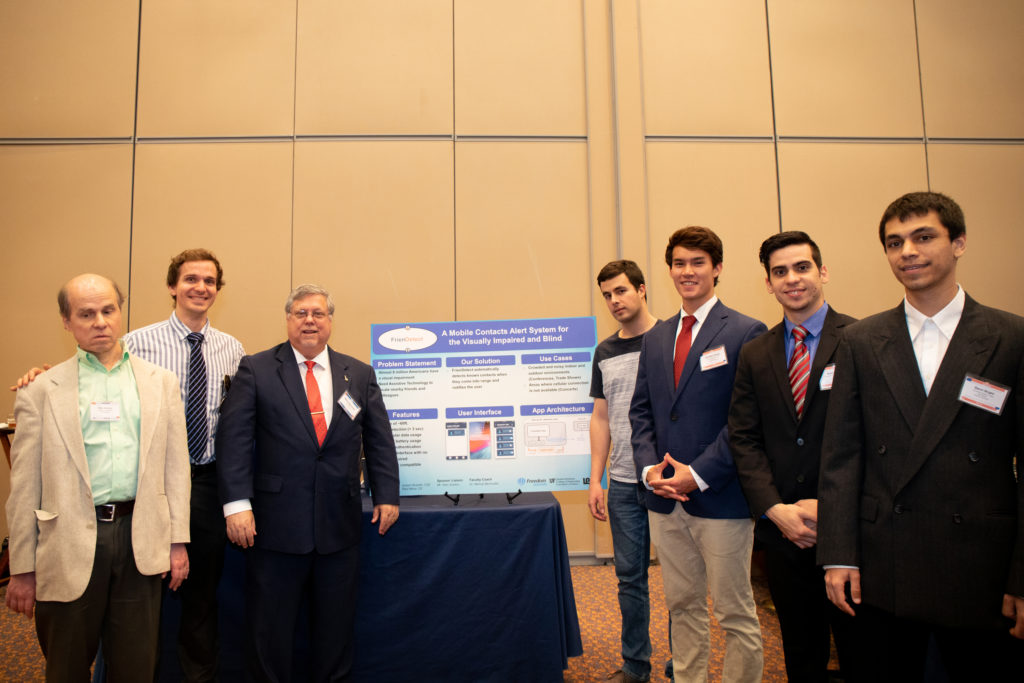As a company we’re always on the lookout for ways that we can help people learn more about accessibility. The University of Florida is just a three hour drive away from our headquarters, so when we heard about their IPPD program where companies and students get matched to work on a project together, this seemed like a great opportunity to have an impact on some of tomorrow’s leaders.
We sponsored a team of five computer science and engineering majors and challenged them to solve the age old problem of being blind and in a semipublic space; a space where you can’t figure out who’s nearby because either too many people are talking or nobody is talking at all. The goal was to develop an iOS app that would inform you when one of your contacts arrives in the immediate vicinity. That was the broad idea. It was up to them, with the help of a faculty coach and our ongoing feedback to make it a reality.
In September the team visited our offices to get a project overview, learn about our products, and meet some of our blind employees. Throughout the academic year we had weekly meetings to refine the prototype design, and brainstorm how to best resolve technical challenges. Over a ten month period these students went from having had no contact with people who are blind or the technology we use to having an understanding and appreciation of accessible design. This happened not because we had long drawn out discussions about accessibility but rather because it was an underlying theme, coming up over and over again while working through aspects of the prototype. They were able to witness firsthand how small accessibility changes made their app much more usable with VoiceOver.

It was a much more self-assured and knowledgeable team that returned to our offices last month to show off their project and get some feedback about usability. They did a great job at fielding questions and it was clear from the discussion that they understood the problem domain quite well and had real passion for what they created.
You can get an overview of their prototype iOS app in this narrated video. Quite a bit of additional work would still need to be done before it can be publicly released, but they provide a great start.
The code is now up on GitHub as a BSD licensed open source project. We hope that others will be inspired by what’s been done so far and decide to build on what’s already been done.
These students have decades of career time ahead of them. Several will undoubtedly be faced with decisions about how much time and effort to devote to accessibility. Others will have blind coworkers or will be interviewing blind job candidates. We believe that their experiences working on this project will help inform their decisions in these areas.